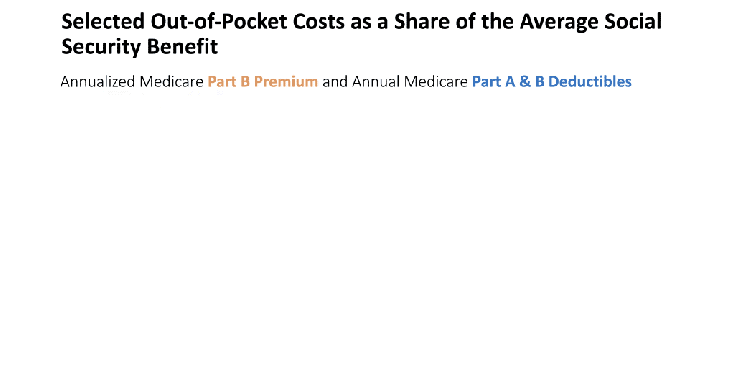Selected Out-of-Pocket Costs as a Share of the Average Social Security Benefit
The growth in Medicare spending is a federal budget issue and also a pocketbook issue for beneficiaries. The rise in Medicare spending has contributed to a rise in Medicare premiums and deductibles as a share of Social Security income over the past two decades. Between 2002 and 2022, Medicare Part B premiums alone increased from 6% to 10% of the average Social Security benefit. Adding in Part A and Part B deductibles for hospital and physician services, these costs combined have increased from 15% of the average Social Security benefit in 2002 to 19% in 2022.
The Medicare Trustees project that Medicare premiums and cost sharing will account for an increasing share of Social Security benefits in the future. While most beneficiaries have other sources of income in addition to Social Security that are not factored into these estimates, they also incur additional out-of-pocket costs for other health-related expenses, such as prescription drugs, cost sharing for physician visits, and costs for services not covered by Medicare, such as dental care and long-term services and supports.
Find these facts and more on Medicare spending trends in the new KFF interactive, “The Facts on Medicare Spending.”

